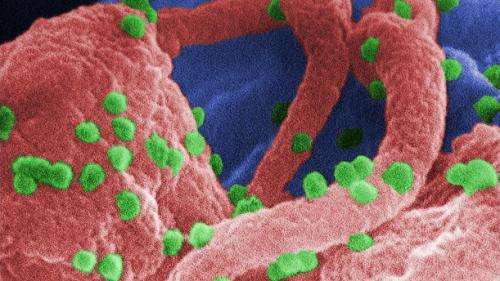Undiagnosed acute HIV rates higher than expected in 'low prevalence' areas

A new study at the University of Cincinnati (UC) shows a surprisingly high number of undiagnosed acute, or new, HIV cases in emergency departments, even in areas where HIV is relatively uncommon.
The study, published in the American Journal of Public Health, sought to get a better sense of how many individuals visit the emergency department (ED) with undiagnosed HIV, and how many of those cases are detected with usual testing methods (which test for long-term HIV infection), as compared with more advanced testing methods that test for newly acquired infections.
Detecting HIV in the acute stage is very important, according to senior author and assistant professor of emergency medicine Michael Lyons, MD.
"In the first months after HIV infection, the amount of virus in the blood is very high, increasing the chance of transmitting the illness to others," he says. "Diagnosis at this stage can lead to treatment, improving the patient's health and decreasing the chance of further transmission."
But Lyons says that it's difficult to detect HIV in the acute stage: "First, the symptoms are very common, so patients with the illness do not stand out. Second, the least expensive and most commonly used HIV tests will miss acute HIV."
Furthermore, there is disagreement among physicians on whether and how to implement screening in overwhelmed emergency departments. Lyons says resistance to adding screening services is even more likely in areas of low HIV prevalence.
"This is in part because the prevalence of acute HIV in EDs is not well characterized, particularly in these low prevalence regions," he says. "But if acute HIV is more common in our patients than we think, and more common in emergency departments than in other places, then this should motivate emergency physicians to not only do more HIV screening, but also to do it with the best technology we have."
To gather data on this question, Lyons and co-authors from the UC Department of Emergency Medicine and the UC Division of Infectious Diseases conducted a cross-sectional "seroprevalence" study, enrolling randomly selected patients 18 to 64 years old from an urban ED in an area of lower HIV prevalence. Subjects were paid for providing a blood sample and health information. Once the data was permanently de-identified, researchers tested the blood for HIV antibodies (chronic infection) and nucleic acid (acute infection).
Of 926 subjects, researchers found that the prevalence of undiagnosed HIV was 0.76 percent, or seven cases total. Three, nearly half, of the undiagnosed cases were acute—and not detectable by usual HIV tests.
First author and emergency medicine resident Phillip Moschella, MD, PhD, says the high proportion of acute HIV found in the study is somewhat surprising—and suggests that emergency departments are even more important for HIV screening than previously thought.
"Overall, the results suggest that EDs have an unusually high prevalence of acute infection relative to chronic infection, even higher than in other possible testing venues," says Moschella. "Most surprising, is that this is true even in lower prevalence regions where new HIV infections are thought to be uncommon."
"It's likely that thousands of acute cases go undetected in U.S. EDs every year," says Lyons. "These missed opportunities are particularly damaging to individual patients and public health overall—and point to the urgent need for growth in large-scale ED screening practice and also further investigation."















